Ilikuwa siku nzuri leo katika eneo la bay, kwa hiyo nilielekea Napa na Bonde la Papa. Nilikuwa nikichunguza eneo jipya kwa nondo ndogo ya maua, Speedy Heliolonche, ambayo inaonekana inangojea hali ya hewa nzuri zaidi kujitokeza. Msimu huu umechelewa kidogo kwa sababu ya baridi na mvua, lakini ninaweka matumaini ya ziara ya kurudia yenye mafanikio katika majuma machache. Hata hivyo, Nilikutana na wachache wa microleps nzuri. Nondo hizi zote ziko kwenye jenasi ADELE na familia Adelidae (au wengine wangesema Incurvariidae). Wanajulikana kama “nondo za hadithi” kwa sababu wanaonekana wakicheza juu ya vipande vya maua – ambayo inaonekana fairies upendo kufanya. Ilionekana kama wanaume walikuwa wakilinda eneo ndogo, na mbili hadi tatu kwa wakati mmoja, tukizunguka-zunguka inchi chache juu ya maua. Nadhani ngoma hizi zilikuwa za kimaeneo kwa sababu hakuna kujamiiana kulionekana. Wakati wanawake wana antena ndefu, wanaume huchukua kupita kiasi. Nilikusanya mfululizo mzuri lakini mimi bado hawajaweka aina hiyo – unaona ngapi? Asante, zote za Adelidae zilifunikwa na a 1969 karatasi na Jerry Powell, ambaye pia anaishi chini ya barabara kutoka kwangu.
Baada ya kuangalia makusanyo hapa CAS, na kusoma monograph, inaonekana kama wengi wa hawa ni Adela trigraph. Ni Adelid ya kawaida katika eneo la Ghuba ya San Francisco na sehemu nyingi za pwani za CA. Tofauti inajulikana kuwa kubwa, na bendi zilizovunjika na zisizovunjika pamoja na tofauti ya nyekundu kwenye taji. Adelid nyingine inatambulika kwa urahisi Adela ananichoma moto.
Adela trigraph Zeller 1875
(picha zaidi baada ya mapumziko)
Adela trigraph Zeller 1875
Adela ananichoma moto Chambers 1876
Adela trigraph Zeller 1875
Adela trigraph Zeller 1875
Adela trigraph Zeller 1875
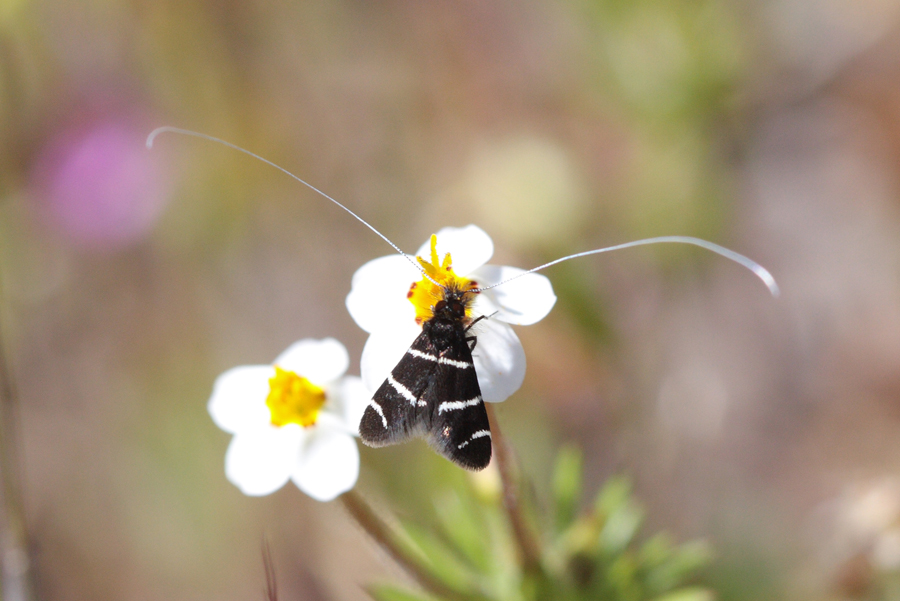
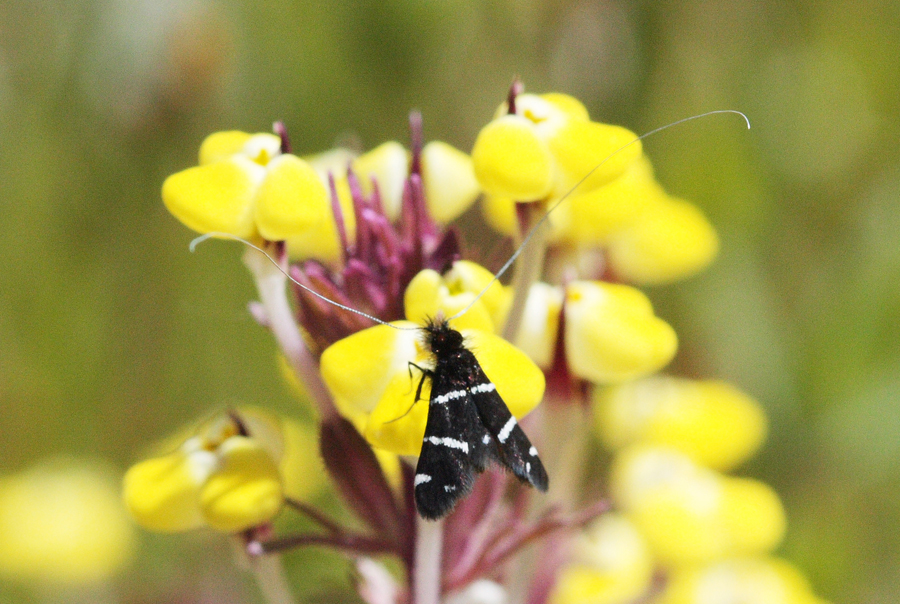
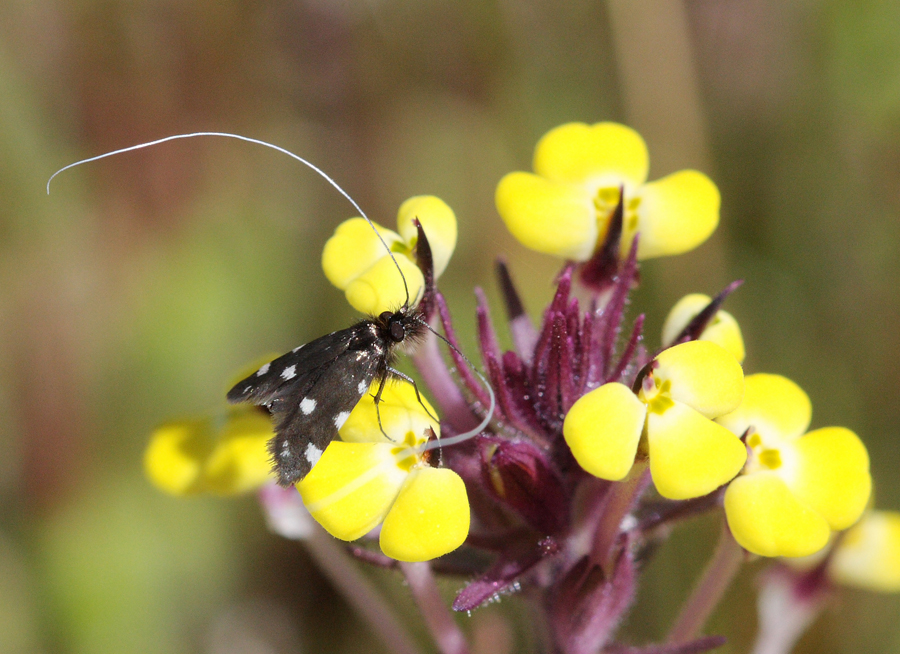
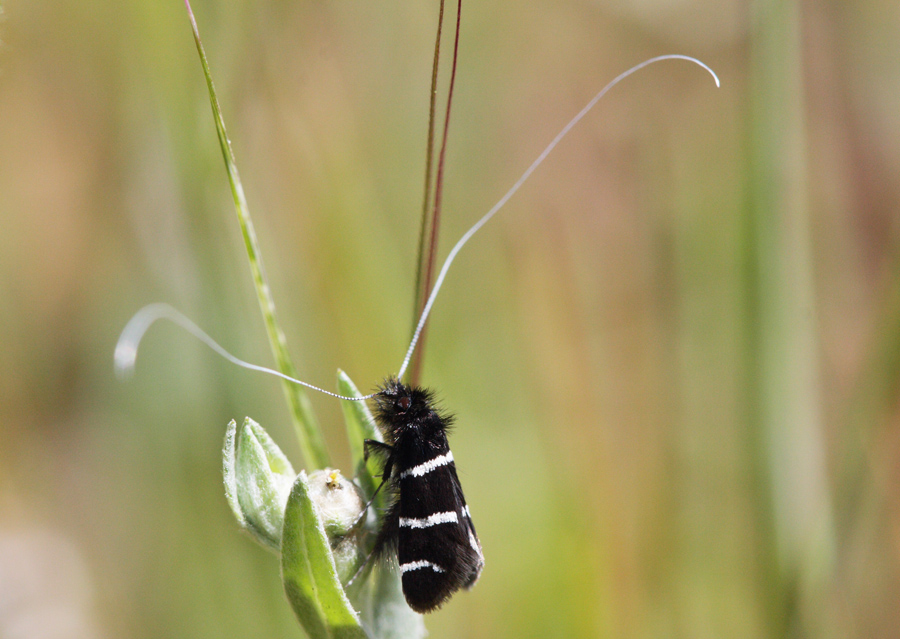
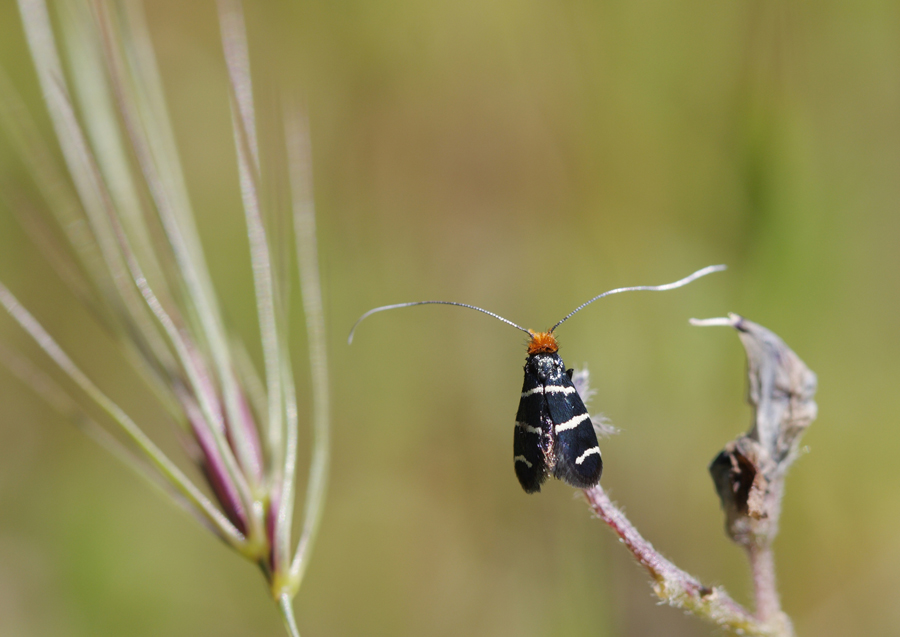
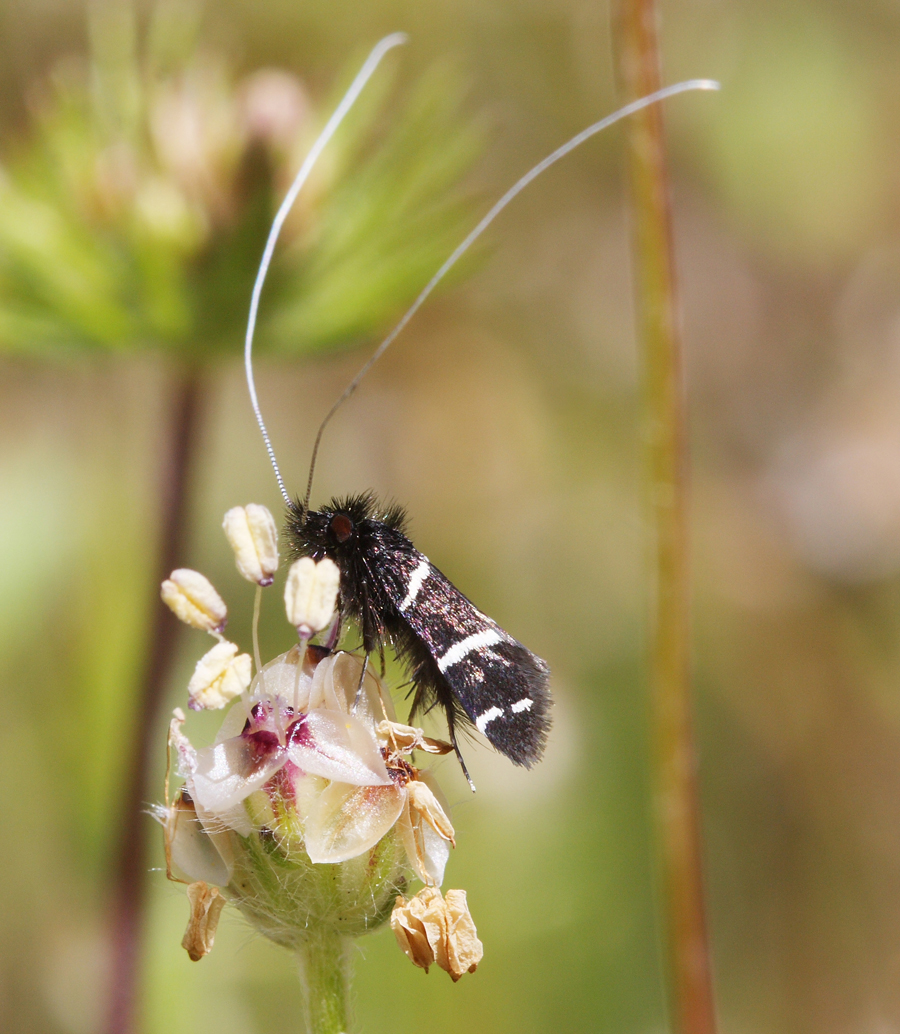

Must be at least three species – what about the one with the orange head? The markings are like those in photos 1 na 4, but the antennae don’t look as long and I’m wondering if this is sexual dichroism.
I hung out with a moth guy in my early days, who introduced me to “Incurvariidae.” They’re quite small as I recall – must be quite a challenge to mount.
Chris
Very unusual moth. To me it looks like a stag horn moth. How big is the wing span?
Yes I’m thinking 3 as well. I thought dimorphism at first too, but reading Powell it sounds like there are 2 species that are both supposed to have orange on the head to varying degrees. Not to mention, they shouldn’t overlap in range. It’s the ones without the orange that are more puzzling! I’ll just have to go over to Berkeley and have Jerry put names on them.
I kind of cheat by mounting my micros upside down – and I’m trying to illustrate exactly how I do it so I can add it to the techniques section.
And as far as micros go these guys are big! About 12mm wing tip to wing tip.
I love these little moths!…used to see them often while hiking along the coastal trails at Pt Reyes, on Calochortus tolmei.
Not which species though, perhaps you can put a name to it?
http://bobabela.com/California-Nature/Insects-Spiders/7263324_oXTZd#466874794_R7RiX
Updated, looks like they are all the same. Bob – your moth would also be A. trigrapha.
Ah, so two species rather than three – the post apical band can be complete or broken, but what about the orange head?
shukrani Chris.
It’s still confusing. Males have the orange, which varies considerably. There is still a chance some of these are Adela eldorata, which more commonly has a bright orange crown. I’ll still have Powell sort these specimens out and tell me the verdict.
All the monograph says in regards to the red on A. trigrapha is “… and a few to several orange scales at the back of the crown.” No note on dimorphism.
[…] Mchomaji, at The Skeptical Moth, goes moth tasting in the Napa Valley and photographically samples some intoxicating vintages of Adelidae fairy […]
[…] Adela trigraph (Nondo Tasting katika Napa) […]
[…] since I saw Chris Grinter’s beautiful photographs, I have wanted to see (and possibly photograph) the tiny little moths known as fairy moths (familia […]